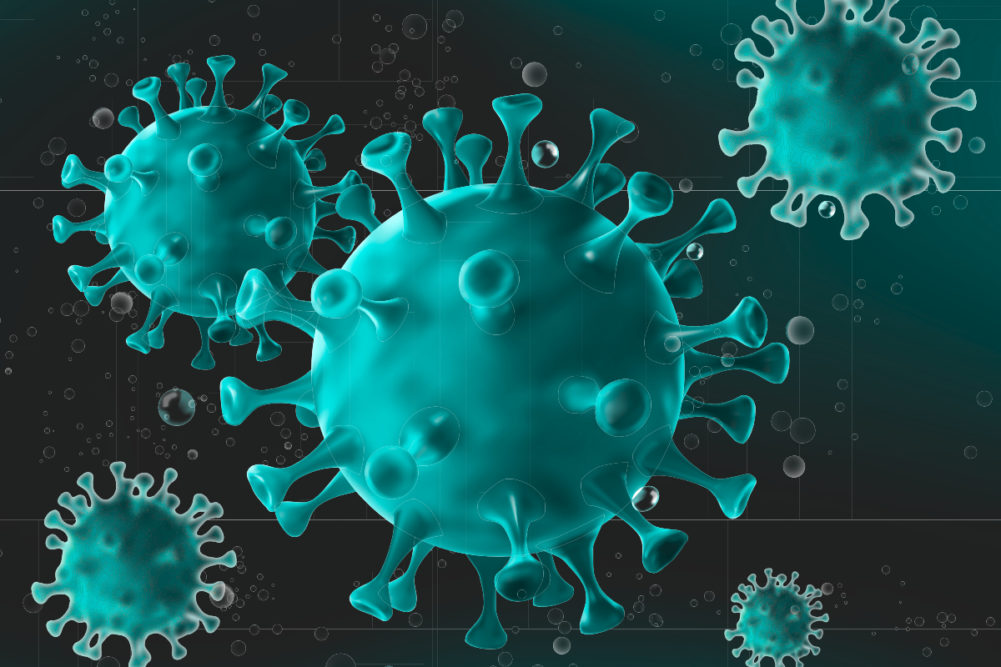The global grain and oilseeds sector is feeling the impact of the coronavirus (COVID-19) pandemic as it has caused ongoing trends such as deglobalization of supply chains and declining biofuels demand to accelerate while increasing concerns about food security, according to a recent study by food and agriculture investor Rabobank.
The report — “The Grain and Oilseed Sector in a Post-COVID-19 World” — examined potential short- and long-term trends that will impact every link in the grain and oilseed supply chain, including producers, farm input suppliers, grain merchandisers, processors and grain-based foods manufacturers.
Stephen Nicholson, grain and oilseed analyst for Rabobank and author of the study, told reporters during a video conference on Sept. 22 that a group of Rabobank analysts from around the world identified seven areas of major, long-term change for the sector: Increased government intervention; changes in consumer behavior; increased food security concerns; declining biofuel demand; deglobalization of supply chains; increasing investment in digital supply chains and a decline in global feed demand.
Consumer behavior
Among the most impactful changes occurring during the pandemic, which began in January and is showing no signs of slowing, has been the eating habits of consumers. Before COVID-19, US consumers, for instance, ate 51% of their meals outside the home, but when the lockdowns occurred to prevent the spread of the virus, closing restaurants and other types of public foodservice, that number plummeted to 5%. But Nicholson pointed to other more specific changes, such as a dramatic surge in the demand for flour and baked foods that left grocery shelves empty.
“Prior to COVID, most grocery shoppers stayed on the outer parts of the store where meat, dairy, fresh produce and the deli are located,” Nicholson said. “But during the pandemic they have started going to the middle of the store and buying more cereal, pasta and other grain and oilseed-related products. It changed the dynamic there, and I believe every day that goes by in the pandemic cements these new habits in the consumers’ mind. Once we get past COVID, those habits will become normal.”
Food security
From a food security standpoint, the pandemic has caused many countries to alter their grain supply chain strategy from “just in time” to “just in case,” Nicholson said.

“Countries are now thinking that if this happens again, we don’t want to be short,” he said. “In the case of China, they are currently rebuilding stocks but are also to the point where they don’t want to get caught again where they have to depend on a supply chain that might be fractured during a pandemic or some other type of catastrophe.”
China has imported huge amounts of corn and soybeans in recent months with the intention of increasing its grain reserves. Other countries also are employing a similar strategy, which Nicholson said is a good news/bad news situation for the grain and oilseeds sector.
“It’s good in the short term but long term we may have this huge inventory acting as a cloud over the market,” he said. “We have to think about that going forward.”
Deglobalization and government intervention
Food security, geopolitical and food safety issues also are causing the acceleration of the deglobalization trend that already was occurring prior to COVID-19, Nicholson said, adding that the world is likely to see more regional and bilateral agreements even after the pandemic ends.
The report predicted that “countries will turn inward to promote domestic food production/markets and self-sufficiency and turn outward to cultivate ‘favored trade partners.’” This would hurt the competitive advantage of major exporting countries and, to a certain degree, multinational grain traders, Nicholson said.
“This kind of goes back to the increased government intervention (in grain markets) as countries want to make sure it’s a situation where they don’t have any sort of disruption in supply,” he said.
Feed and biofuels industries
The pandemic has hurt and will continue to hamper the biofuels and feed industries even after it ends, according to the report.
Fuel (including biofuels) consumption was already on a slightly downward trek prior to COVID-19, but the decline has been accelerated as more people work, eat and spend leisure time at home, Nicholson said. While the immediate and worst demand reductions were felt early in the crisis in April and May, in most cases demand has not returned to pre-COVID levels.
“In the short term, you’re going to see a little decrease in biofuels and gas consumption in the fall and winter months,” he said. “You can add to that the cold and flu season and people being worried about another spike in COVID-19 cases, which is almost certain to keep people home.”
Working from home, less business travel, less vacation travel and more virtual events and meetings make for a grim long-term picture for the biofuels industry, Nicholson said.
“We’ve discovered that we don’t need to go to the office,” he said. “We’re not driving or flying as much, and it’s changing the whole energy sector completely. We think that will be an ongoing trend that will be accelerated and a concern for the biofuels sector for many years to come going forward.”
Even if the pandemic ends, the demand for grain-based biofuels will still be stagnant at best, Nicholson said.
“In recent years we’ve been seeing a slow decrease in corn demand for ethanol in the US,” he said. “That’s been fueled by a couple of things, including more fuel-efficient cars, more electric cars and an overall decrease in demand for gas and oil products. That trend was already in place and it’s not going away. If anything, it might accelerate.”
As for the animal feed industry, large supplies of meat, contraction in foodservice, and the resulting drop in demand are squeezing profitability in the world’s livestock sector. Nicholson noted that the varying species’ biological cycles will create a “long tail” of potentially contracting feed demand. This already has been reflected in the US June 1 corn stocks, in which total corn demand in the second quarter of this year was down nearly 20%.
The short-term pullback has been in US poultry numbers, he said, while contraction in the pork and beef sectors will take longer to be reflected. He said the pandemic coupled with the continuing culling of pig herds worldwide due to the African swine fever outbreak, which began in Asia but recently was discovered to have spread to Germany, “have disrupted the feed chain and makes it very difficult to figure out what the demand is going to be.”
Digitalization of supply chains
Another trend to consider in the post-COVID-19 era, according to Rabobank, is agricultural supply chains becoming increasingly digital. The report foresees farmers adopting digital platforms to collect, manage and share information along the supply chain to enhance traceability or to track sustainability practices in production agriculture. E-commerce platforms will grow in the farm input supply chain, which has implications for producers and input suppliers, Nicholson said.
Nicholson said he foresees “major changes in the farm input distribution system. It will go to an Amazon-type format where you will have seed and chemicals delivered directly to the farm. They will no longer be going to the local agronomy center to get these things. It will change the landscape. Those changes are because of COVID-19 and also what’s happening with inputs.”
Seizing new opportunities
The good news, he said, is that these changes would offer opportunities for forward-thinking producers and companies in the global grain supply chain to succeed. Across the entire grain and oilseed supply chain, there are impacts and implications that will require business models to adapt and show increased flexibility, he said.
Because COVID-19 has accelerated the ongoing, decreasing long-term demand trend for corn-based ethanol, farmers will need to be more attuned to their local market and find new crops to produce for regional processors such as organic, non-GMO and gluten-free grains as well as pulses for plant-based protein foods, the report said.
The consensus among the Rabobank experts was the food supply chain is going to get shorter.
“Producers will start controlling more of the supply chain,” Nicholson said. “They used to control production and that was about it, but now they control storage and logistics; they act almost like any grain logistics company except rail, vessel and barge. They can get it to railheads, ports and even export facilities.”
As for grain processors and grain-based foods manufacturers, changes regarding trade, views on globalization as well as food security all point to diminished export volumes and under-utilization of export facilities, the report noted.
Nicholson said the grain and oilseeds supply chain may change as players in the chain become more specialized and become stronger by emphasizing their strengths.
“This may take many forms,” he said. “If you have a strong export network, you would focus on exports. Regional players would potentially focus on grain origination and/or possibly develop their traceability capabilities. In other words, more division of labor and specialization along the supply chain makes it more flexible and safer.”
Nicholson noted that grain processors and grain-based foods manufacturers had developed efficient, low-cost, mass production processes that were geared to serve the ever-expanding foodservice industry.
“They produced at low cost for the consumer, but the pandemic has poked holes in that (model) so they now need to reevaluate that and think about how they can become very nimble in altering that process to serve the market,” he said.
Changes in consumer eating habits is taking a severe toll in the foodservice industry in the United States, where it is estimated that up to 50% of restaurants will permanently close, Nicholson said.
The report noted these changes have “made one part of the processing/manufacturing chain less relevant, as grocery stores supply more food to consumers versus foodservice. This may result in more flexibility in manufacturing lines in order to accommodate these changes.”
The report concluded with this warning to the grain and oilseeds sectors.
“The post-COVID-19 world is going to be different,” the report said. “The volatility of and changes in the grain and oilseed landscape will demand our imagination, flexibility, and openness to new market possibilities.”





